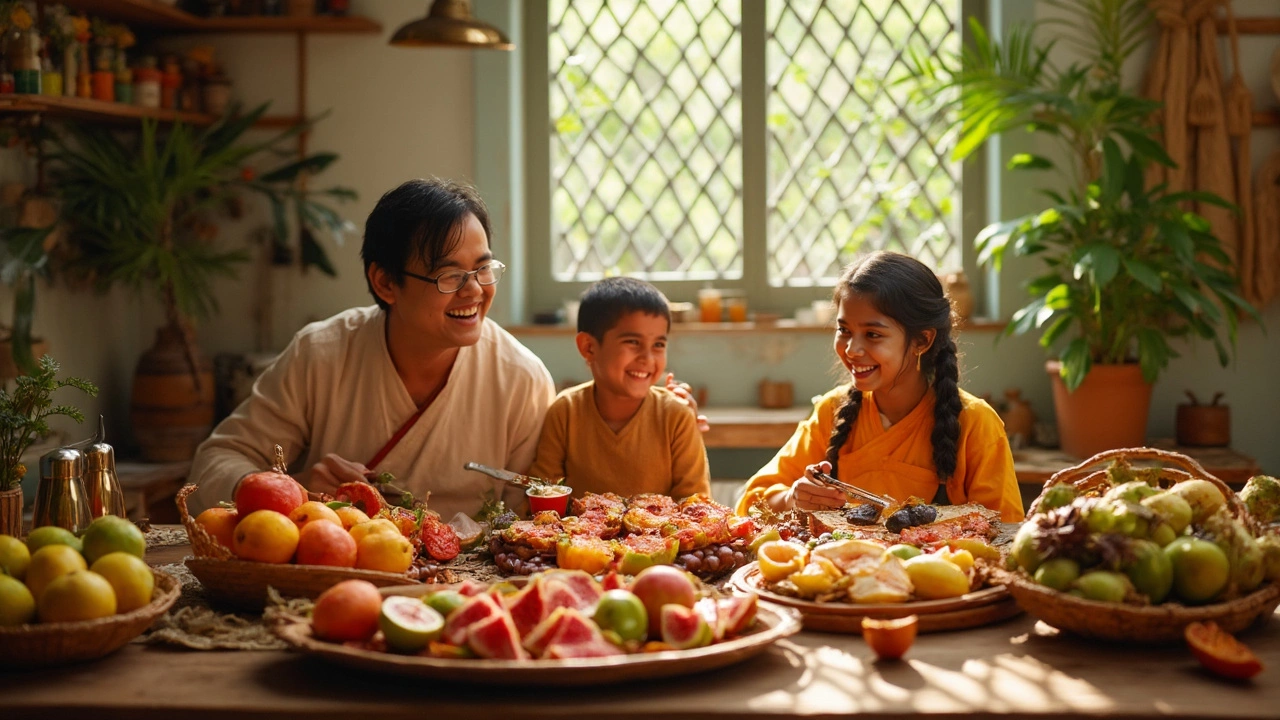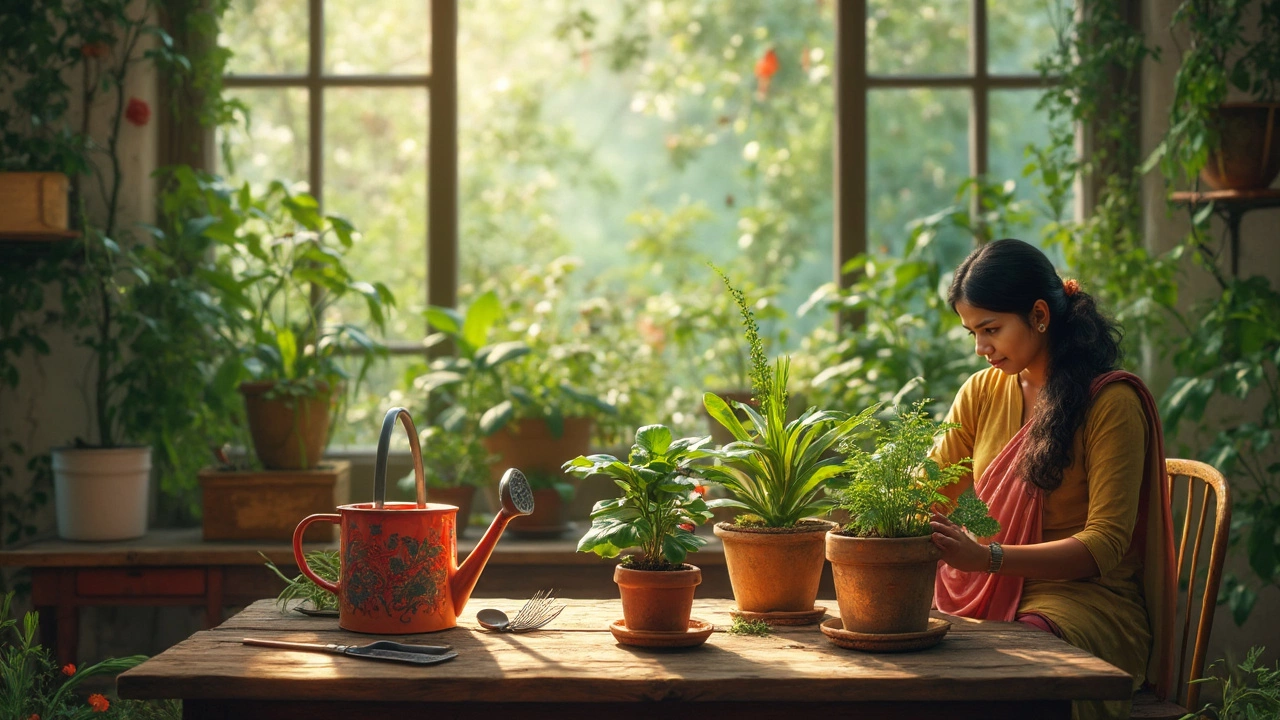Zero Waste Fruits: Tasty Nutrition and No Leftovers

So you’re biting into an apple or peeling a banana—ever wondered if there’s any fruit out there that doesn’t leave you with peels, seeds, or pits to chuck in the bin? Imagine munching on something so perfectly designed that you use it all. This idea sounds almost magical these days, with all the focus on food waste and sustainability. Let’s really get into the world of zero waste fruits, the close contenders, and some clever hacks to make even your usual snacks more planet-friendly. If you’ve ever scraped sticky orange peels off your counter and wished for an easy clean-up, this one’s for you.
The Holy Grail of Edible Fruits: What Makes a Fruit "Zero Waste"?
Let’s talk about what “zero waste” even means when it comes to fruit. The dream is to pick up a piece of fruit, eat everything—and have nothing to toss aside. No peels, no seeds, no hassle. Most fruits aren’t quite there, are they? Peaches have pits, oranges have peels, watermelons have rinds thick enough to break a knife. But a small handful of fruits get pretty close to that zero-waste status.
Zero waste fruits are the ones you can eat pretty much entirely, from the outside in. The real MVP here is the humble fig. Figs can be eaten whole—skin, seeds and all. Nature’s little snack—no peeling, no tidying up. But let’s not stop there. Berries like blueberries, raspberries, and blackberries tick the “no waste” box too. Everything from tip to tail is edible. Pop a blueberry in your mouth—nothing left in your hand, and certainly no guilt. Slight curveball—grapes. You can eat the skin and flesh, although some folks might spit out the occasional seed. Seedless grapes? Even better.
If you’re keen for variety, kiwiberries look like mini kiwis but are smooth and bite-sized. For those, you munch the whole thing. Chomp and move on, no need to ever reach for the compost bin. On the flip side, classic kiwis have fuzzy skin that most people peel, but that fuzzy coat is absolutely edible, just a bit ticklish on the tongue. Apples are a special case—if you power through the core and seeds (which are technically edible but not that tasty), you can claim almost-zero waste, especially for smaller, softer varieties. Pears are also nearly there—the skin is thin, the core is edible or easy enough to eat around. Cherry tomatoes—yep, a fruit!—are definitely on the zero-waste team if you’re counting fruit by the botanical rulebook. And don’t forget about some wild varieties: groundcherries (physalis), for example, have papery husks you peel off, but the entire interior fruit is fair game.
Ready for a curveball? Some cultures eat banana peels! Steam them, saute them, do whatever—while not mainstream in Birmingham, this trick is picking up, thanks to vegan recipes and home cooks trying to cut waste. And citrus peels? While most people throw them away, they’re absolutely edible if candied, zested, or used in a salad. It’s a stretch, but technically doable if you don’t want to toss anything. Check out the numbers—an average UK family chucks away 5.8 kilograms of fruit and veg each week (WRAP, 2023), so every little bit of waste saved counts for quite a lot, especially when multiplied out.
Here’s a quick look at which common fruits fit the zero-waste or almost-no-waste bill, and how much of them you can actually chow down on versus what’s left behind:
| Fruit | Skins Edible? | Seeds/Pits Edible? | True Zero Waste? |
|---|---|---|---|
| Fig | Yes | Yes | Yes |
| Blueberry | Yes | Yes | Yes |
| Grape (Seedless) | Yes | Yes | Yes |
| Groundcherry (Physalis) | No (Husk) | Yes | Almost |
| Apple | Yes | Technically (but bitter) | Almost |
| Kiwiberry | Yes | Yes | Yes |
| Pear | Yes | Yes | Almost |
| Cherry Tomato | Yes | Yes | Yes |
Notice, some of those fruits come with trade secrets or skills. Banana skins? Need a recipe. Kiwi skins? Maybe rub off the fuzz. But the bottom line? Fruits that get closest to zero waste are nature’s fast food, ready to eat, quick to please, no wrapper required.

Eating the Whole Fruit: Tips, Tricks, and Surprising Recipes
Alright then, what do you actually do if you want to munch your way to less waste? If you’re used to peeling apples or cutting out every seed, here are a few old tricks updated for a modern, more sustainable kitchen.
First, let’s tackle the big one—apple cores. Most people throw them away, but you can eat the whole thing (yes, including pips, just don’t make them your regular snack by themselves—the pits contain amygdalin, and while the odd pit isn’t going to cause trouble, you don’t want to chomp a handful every day). If you mix whole apples into smoothies, or roast them with cinnamon, you won’t even notice any difference compared to only eating the sliced bits. If “eating the core” feels off, you can always boil the leftovers and snag a bonus cup of fresh apple tea. Toss the peels and cores in a pot, cover with water, simmer—hello homemade zero-waste drink.
Bananas. Peels have been showing up in vegan pulled “pork” recipes, especially on social media. Try using a banana peel for stir fry—it needs a good scrub, but sliced up and combined with sauce, most people won’t guess the surprise ingredient. For something sweeter, blend banana peels into smoothies. They add a bit of extra fibre and a mild, earthy taste.
Citrus fruits are another opportunity. You might not want to chomp down an orange peel raw, but grated zest gives big flavour in both sweet and savoury dishes. Homemade lemon salt is easy—mix grated lemon peel with flaky salt, let dry, and sprinkle over fish, chips, or popcorn. Peel scratchy and bitter? Try candying citrus peels by simmering in sugar syrup—suddenly, what you usually bin becomes a glossy snack for your next movie night.
Mango skins. These are actually edible, though a bit tart and fibrous—not everyone’s thing straight off the tree, but great whizzed in a juicer or dehydrated for a homemade chewy snack. If you’re ever in a spot where you hate to waste food, pop the peels in a blender with Greek yogurt, honey, and some ginger for a digestion-friendly treat.
Even with “impossible” fruits—melons, avocados, and stone fruits like peaches or nectarines—you can cut down on your bin pile. Watermelon rind gets new life in Asian stir fries (it cooks up crisp like cucumber) or can be pickled for a tangy side dish. Avocado pits might seem indestructible, but you can dry, grind, and add them (in small amounts) to smoothies for an antioxidant boost—definitely a weird tip, and not for everyone, but it’s catching on among zero-waste fans.
Here’s a lineup of simple, actually tasty “whole fruit” hacks to try if you’re rooting for no leftovers next snack time:
- Blend it: Toss apple cores, kiwi skins, or whole citrus fruit (without the seeds) into smoothies—blender will do the work for you.
- Preserve peels: Dry citrus or apple peels for tea blends.
- Candy or pickle what’s left: Try candied orange peel or pickled watermelon rind for zero-boredom, zero-waste nibbles.
- Infuse water: Drop fruit peels and cores in a jug with cold water overnight for a DIY spa water.
- Compost the rest: If you DO end up with something you won’t eat, compost is better than landfill for your scraps.
All of these hacks work for snacks, desserts, even little bits in your packed lunch for work. If you’re a parent, they’re quirky enough to get kids interested in new tastes—and maybe leave fewer sticky peels behind on the sofa.

More Than Just Food: The Future of Zero Waste and Fruit Consumption
Sustainability is going to matter more and more, especially with how much food we lose just after it’s picked. The crazy thing is, reducing waste at the fruit bowl is low-hanging fruit (pun absolutely intended). Food waste is a genuine problem—according to WRAP, the UK food and drink sector has made a target to halve food waste by 2030, and fruits play a massive part since they spoil faster than nearly everything else.
Why do zero waste fruits matter? Start with the numbers: about 33% of all food produced globally gets wasted. Fruits and veggies make up a huge chunk of this because of their short shelf life and how much of them we peel or slice off. By making even a tiny shift to eating the whole fruit, you chip away at a big problem. And let’s not forget the personal win—less waste means less cleanup, less money in the bin, and more value for what you buy at the store.
Zero-waste eating isn’t just about fruits, either. The movement’s picking up speed everywhere you look—restaurants are experimenting with carrot tops in pesto, home cooks are using broccoli stems, supermarkets in Birmingham have begun promoting “wonky” fruit bags, where funky shapes that used to get chucked are now sold cheaply. It’s all a piece of the puzzle, but fruits are a natural starting point for anyone aiming to cut waste without adding more work to their everyday meals.
Let’s not forget about packaging—another hidden culprit behind fruit waste. If you pick up your blueberries in a plastic punnet, that’s waste the minute you finish eating. The best zero-waste approach is shopping at farmer’s markets in your own bags, or growing your own if you’re lucky enough to have a patch of dirt behind your flat, like a few of my neighbors here in Birmingham. Even in the city, small changes like swapping packaged bananas for loose apples can make a dent in your bin count over the year.
Zero-waste fruits might sound like a little thing, but add it up across a street, a city, a country—and you’re doing your bit without breaking a sweat. Whether it’s biting into a whole fig on the go, blitzing watermelon rinds into smoothies, or candying citrus peels for quick energy on busy days, every no-leftover snack matters more than most people think.
In the end, eating truly zero-waste fruit is about small but smart choices. Pick the right fruits, try a few new ways to eat the bits you usually skip, and remember, making even a bit of effort ends up saving a surprising amount—on your food bill, your time, and for the planet. Not too shabby for something as simple as a snack, right?





